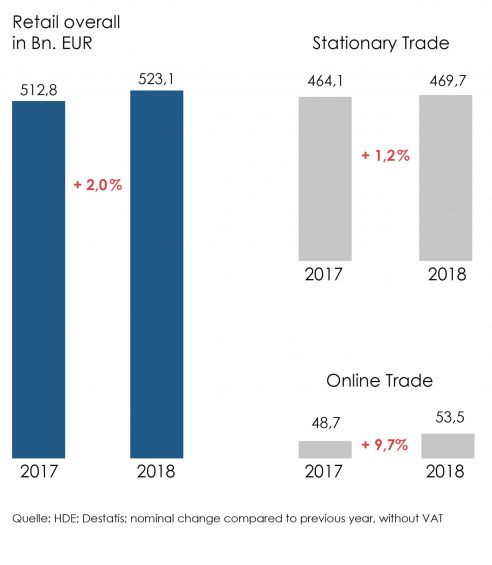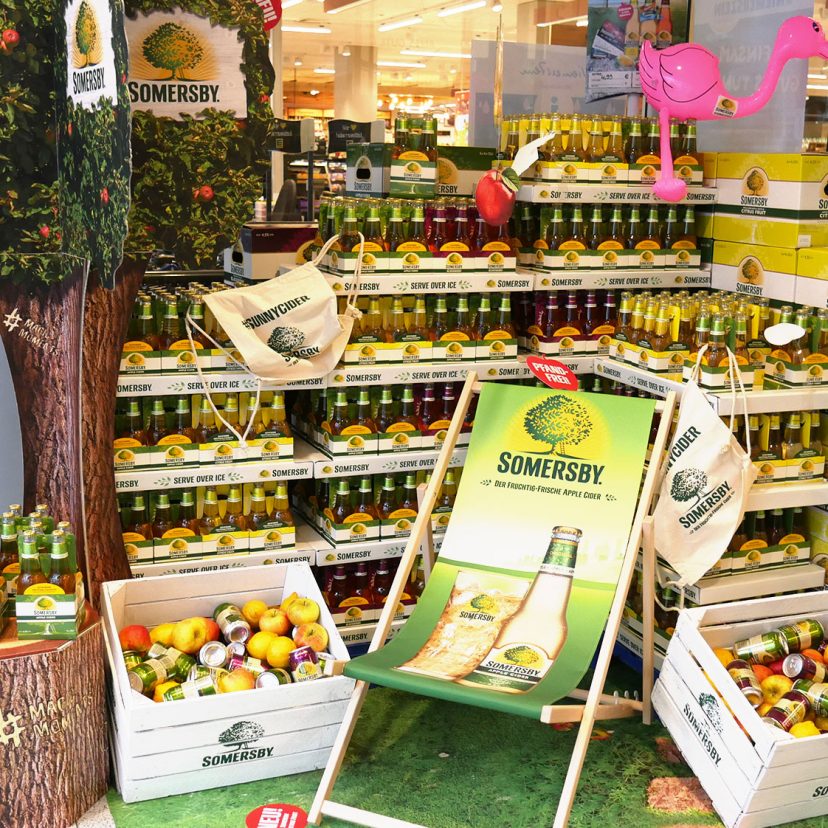Meaning and Expectation of the Shopper
The current situation of the stationary Point-of-Sale
Stationary retail has been under pressure for years. Although it accounts for more than 90% of total retail sales in Germany, online retailing is recording significant growth. The development towards convenient shopping is strong and is driven by four basic needs (see Stein Omnishopper study):
- Inspiration
- Safety and security
- Convenience shopping
- Price awareness
But who currently carries what significance in retail? More than 20 percent of the 1,550 consumers surveyed shop online on a weekly basis and about 3 percent even daily. Almost two thirds go on a virtual shopping tour every month (37%), occasionally (29%) or at least once a year (4%), while only 7% say they never shop online.
And yet stationary retail is more relevant than ever in everyday life because the personal visiting frequency is unbeaten in sectors such as food retailing. The stationary shop is visited even more frequently: 12 percent of the study participants do their daily shopping here and 59 percent their weekly shopping. A further 27 percent do their shopping on a monthly basis, occasionally or at least once a year in the retail shop.
Across all sectors, sales growth in recent years has been more pronounced in online retailing, which is being fuelled not only by convenience but also by the increasing technological possibilities for shopping online via mobile devices. In a few years, the Digital Natives will represent a large proportion of consumers and strengthen this trend in the long-term.

There is no magic formula for the survival of stationary retail. Despite the strong growth in online trade, stationary trade also continues to record a slight growth. But creativity without boundaries is required, coupled with the ability to be close to the needs of the customers. So break down the familiar barriers and rethink across all channels and media to appeal to today’s and tomorrow’s customers. However, this will only work if the retailer understands both his own data as well as his customers. Which of the above-mentioned needs is the strongest in his business? the measures at the POS, such as Category Management or new services, are geared towards this. The customer is also active in multimedia – from research to purchase, but the retail trade is not there yet. However, even to this day, stationary retail offers advantages over online retailing that are difficult to digitalise and should be used.
Knowing the Power of the Consumer
Thanks to the many available technologies, the consumer is often well informed and therefore more powerful than a few years ago. Digital research is a must when making purchases, price comparison has never been easier and the offer is huge and always close at hand. The shopper has the power and at the same time also the control, but the retail trade still holds the trump card in one aspect. Because added value for shoppers and retailers is more in demand than ever. Digitalisation creates opportunities for both, and technological development regularly changes the level of requirements.
We recommend that every retailer intensively looks into his specific Shopper Journey. Understanding when, how and why a customer comes to me and when he stays helps to recognise behaviour patterns. This allows the retailer to adapt his actions in real-time and use resources more efficiently to ensure success.
Understanding the Role of Trade
No matter whether online or offline, retail lives off the consumer, his visits, his needs and his joy of buying. From my point of view, however, retail should not allow itself to be degraded to an ordering assistant. Instead, it can reposition itself through knowledge & service. And when it comes to service, I’m not talking about single-channel options, but about networked thinking for an exciting shopping experience with useful added values. Because shopping has become a leisure activity amongst friends and the desire for entertainment and convenience in the buying process is growing. In addition to learned services, of course it’s also about services that link online and offline with each other and also completely rethink the topic of services. Just one example of a link between online and offline from our study: around one third (32%) would retrieve product reviews from other customers at a terminal in the store if these services were available locally. (Source: STEIN Omnishopper Study)
When I say knowledge, I don’t just mean product knowledge, but also the retailer’s knowledge of his customers. It is becoming increasingly important for the stationary retail business to know its customers and to offer them exactly what they want. This can vary a lot locally, so the range of products offered by the same retail chain might already be managed quite differently within the same city by the respective retailers. The customer also expects to find his or her favourite shopping habits from online retail in stationary retail and vice versa. Our new service MeetInstore is one of the ideas that implement this way of thinking.
We recommend that every retailer and manufacturer should invest in knowledge and service. Because the more competently the supplier reacts to the wishes of the customer through advice and in combination with a matching offer of services, the more comfortable and cared for the customer will feel and will gladly return to this supplier in the future. This positive anchoring with the shopper can be strengthened by regular demand-oriented communication in the phases between the purchases, so that pure purchases can develop into a loyal customer relationship step-by-step.
Observe the development of the POS
With the increasing digitalisation of the retail trade, the industry and the customers, expectations are rising at all levels. If an offer is available, if it is considered sensible and uncomplicated to use, the shopper quickly sees the advantages and makes use of it. Mobile payment solutions, a virtual fitting or simple sales staff with tablet support are just the tip of the iceberg.
Our study together with the EHI Retail Institute has shown that shopping not only serves to meet demand but is also seen as a leisure activity. This means that consumers want to feel good at the POS, experience something and have fun with their friends. More than half of the consumers surveyed also stated that shopping is one of the leisure activities they participate in with friends. Spontaneous impulses and the desire to buy something are essential drivers when it comes to the purchase decision. Thus, shopping is no longer just a point to tick off on the To-Do list, but has become a part of one’s world and personal lifestyle. And retail is therefore no longer just a shopping centre or point of sale (POS), it has become a place that offers a world of experience and is an integral part of life.
My conclusion
Stationary retail is not an outdated model. It just has to change. Unfortunately, many retailers are not creative enough, they copy services and ideas without really having given the Shopper Journey enough thought. And then they ask themselves why one thing or the other doesn’t work. The aim should therefore be to focus on creating added value for the customer – and that is by no means only the price.


